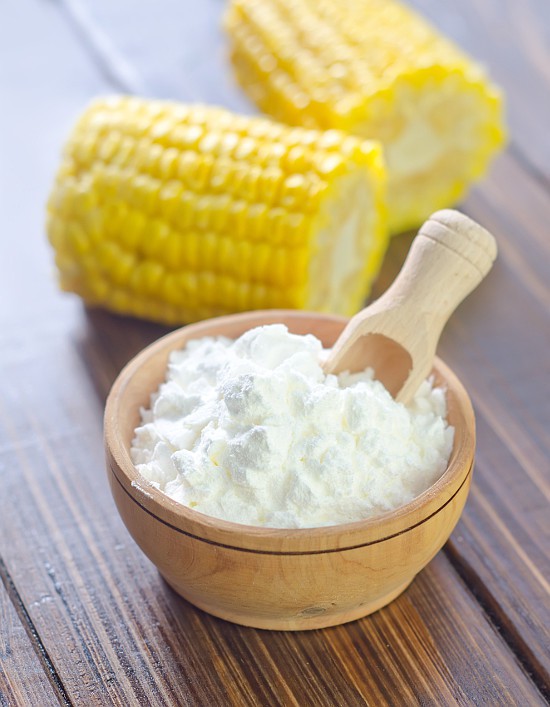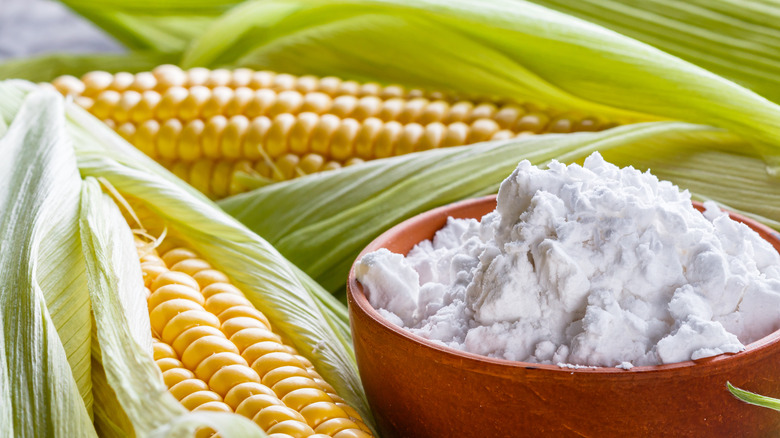Is Cornstarch Gluten Free? Unpacking This Common Baking Question
We get a lot of questions about baking supplies and ingredients, and it's something we really enjoy talking about. So, lately, we get a lot of questions about corn starch, and it seems many people are wondering if it fits into a gluten-free way of eating. This is, you know, one of the most common product questions we've seen recently, especially with more folks looking for ingredients that work with specific dietary needs.
There's a growing interest in understanding what goes into our food, and quite rightly so. With more people finding out they have sensitivities or allergies, knowing the exact makeup of what we put on our plates becomes, honestly, very important. Cornstarch, a common item in many kitchens, often comes up in these conversations.
The simple answer to whether cornstarch contains gluten is actually pretty straightforward, but there are some nuances that make people ask. We want to make sure everyone has the clearest picture possible, especially if you're trying to avoid gluten or just want to understand your ingredients better, you know, for peace of mind.
- Ibrahim Chappelle Might Be Funnier Than His
- Who Is Corinna Kopf Biography Net Worth
- Casey Burke Bio Age Wiki Facts And
- Hgtv S Designer David Bromstad Has A
- Debbie Cartisano Where Is Steve Cartisano S
Table of Contents
- What Exactly Is Cornstarch?
- The Straight Answer: Is Cornstarch Gluten Free?
- Why the Confusion About Cornstarch and Gluten?
- Using Cornstarch in Gluten-Free Cooking and Baking
- Alternatives to Cornstarch
- Frequently Asked Questions About Cornstarch and Gluten
What Exactly Is Cornstarch?
Cornstarch, sometimes called corn flour, is a very fine, white powder. It comes from the endosperm of the corn kernel. You know, it's basically pure starch, extracted from the corn plant. People use it a lot as a thickening agent in cooking and baking, giving sauces and gravies a nice, smooth texture. It's also pretty useful for creating crispiness in fried foods or adding a certain lightness to baked goods, like those cookies we talked about.
The Process of Making Cornstarch
Making cornstarch involves a process that separates the starch from other parts of the corn kernel. First, the corn kernels soak in water with a bit of sulfur dioxide. This helps soften them up. Then, they go through a grinding process, which separates the germ from the rest of the kernel. The remaining parts, the hull and the starch, are then separated. The starch, you see, is washed and dried, leaving behind that fine white powder we recognize as cornstarch. This whole process is designed to isolate the starch component, leaving the protein behind, which is kind of important for our main question.
The Straight Answer: Is Cornstarch Gluten Free?
The short and very clear answer is, yes, cornstarch is gluten free. Corn itself, the plant it comes from, naturally contains no gluten. The starch extracted from corn also contains no gluten. This means that for someone avoiding gluten due to celiac disease or a sensitivity, pure cornstarch is generally a safe ingredient to use in their cooking and baking, which is a relief for many, I mean, honestly.
- Joe Barry Net Worth Is He Really
- Adria Wu Where Is Five Star Chef
- Taylor Swift Buys A 2 5 Million
- Who Is Sarah Jindra S Husband Brent
- Tim Sebastian Married Spouse Marital Life Relationship
Understanding Gluten: What It Is and Where It Hides
To really get why cornstarch is gluten free, it helps to understand what gluten actually is. Gluten is a general name for the proteins found in certain grains, specifically wheat, barley, and rye. It's what gives dough its stretchy quality, helping it rise and hold its shape. For people with celiac disease, eating gluten causes damage to their small intestine, leading to all sorts of health problems. For those with a gluten sensitivity, symptoms can be different, but still uncomfortable. So, knowing which ingredients truly contain these specific proteins is a big deal.
Corn's Proteins: Not the Gluten You're Thinking Of
Now, this is where some of the confusion can come in, and it's something we hear about. Corn does have proteins, of course, every plant does. The main protein in corn is called zein. While some industrial uses might refer to "corn gluten meal," this is not the same type of gluten that causes issues for people with celiac disease or gluten sensitivity. The proteins in corn, you know, are chemically different from the gluten found in wheat, barley, and rye. It's just that celiacs are usually not sensitive to the proteins in corn. Only those who have reactions to eating corn itself would need to avoid it. So, for the vast majority of people needing to avoid gluten, cornstarch is absolutely fine.
Why the Confusion About Cornstarch and Gluten?
It's understandable why people might ask, "is cornstarch gluten free?" There are a few reasons for the lingering questions. One is the general cautiousness around any grain-based product when you're on a gluten-free diet. Another reason is the existence of corn allergies, which people sometimes confuse with gluten issues. Plus, the term "corn gluten meal" in some contexts can certainly throw people off, even though it refers to a different kind of protein than what affects celiacs, as a matter of fact.
Corn Allergy vs. Gluten Sensitivity
This is a really important distinction. A corn allergy is an immune system reaction to proteins found in corn. Symptoms can range from mild, like hives or digestive upset, to severe, like anaphylaxis. This is completely different from celiac disease or non-celiac gluten sensitivity. Someone with a corn allergy would need to avoid cornstarch because it comes from corn. However, someone with celiac disease, who must avoid wheat, barley, and rye gluten, can typically consume cornstarch without any problem, unless they also happen to have a separate corn allergy, which is, you know, a different situation entirely.
Cross-Contamination Concerns
Even though cornstarch itself is gluten free, there's always a possibility of cross-contamination during processing or packaging. This is a real concern for people with celiac disease, where even tiny amounts of gluten can cause a reaction. If cornstarch is processed on shared equipment with wheat-containing products, for instance, trace amounts of gluten could find their way into the cornstarch. For those with very strict dietary needs, looking for cornstarch that is specifically labeled "certified gluten-free" offers an extra layer of reassurance. These products usually come from facilities that take steps to prevent cross-contact, which is pretty helpful.
Reading Labels: Certified Gluten-Free
For the highest level of confidence, especially if you have celiac disease, looking for a "certified gluten-free" label on your cornstarch package is a good idea. This certification means the product has met strict standards for gluten content, usually less than 20 parts per million, which is the widely accepted safe level. Many brands now offer this kind of assurance, making it easier for people to choose products that fit their needs. It's really about giving yourself that peace of mind, you know, when you're cooking.
Using Cornstarch in Gluten-Free Cooking and Baking
Cornstarch is a fantastic ingredient to have in a gluten-free kitchen. It's versatile and can do a lot of things that gluten-containing flours typically do. Its ability to thicken liquids without adding a lot of flavor makes it a go-to for sauces, soups, and gravies. It's also pretty good for making batters lighter and giving baked goods a nice, tender crumb. So, if you're exploring gluten-free cooking, cornstarch is definitely a friend to have.
Beyond Thickening: Cornstarch's Role in Gluten-Free Recipes
While its thickening power is well-known, cornstarch does more than just make liquids denser. In gluten-free baking, it can help create a softer texture in cakes and cookies, compensating for the lack of gluten's structure. For things like fried chicken or tempura, a bit of cornstarch in the coating can give you that really desirable crispiness. It's also used to make dustings for candies or powdered sugar to prevent caking, as a matter of fact. You know, it's quite a workhorse in the kitchen.
Delicious Gluten-Free Treats with Cornstarch
One of the great things about cornstarch is how it helps create delightful treats that are naturally gluten free. For instance, we've seen recipes for cornstarch cookies that are made with just buttermilk, sugar, and cornstarch. These cookies, you know, contain no gluten, and often no eggs either, making them suitable for even more dietary considerations. They have a wonderfully delicate, melt-in-your-mouth texture that's really unique. It shows how a simple ingredient like cornstarch can open up a whole world of possibilities for gluten-free baking. You can learn more about gluten-free baking on our site, and we have plenty of ideas for you to explore.
Alternatives to Cornstarch
While cornstarch is a great gluten-free option, some people need to avoid corn due to allergies. If that's the case for you, there are several other gluten-free thickeners and binders available. Arrowroot powder, tapioca starch, and potato starch are all excellent alternatives that can be used in similar ways to cornstarch. Each has its own slight nuances in how it behaves, but they all serve a similar purpose in thickening and improving texture in gluten-free recipes. It's good to have options, right? You can always find out more about different starch alternatives for your kitchen needs.
Frequently Asked Questions About Cornstarch and Gluten
Here are some common questions people ask about cornstarch and its gluten status:
Is cornstarch safe for celiacs?
Yes, pure cornstarch is considered safe for people with celiac disease. It does not contain the gluten proteins found in wheat, barley, or rye that trigger celiac reactions. However, always check for a "certified gluten-free" label to ensure there's no cross-contamination from processing.
Does cornstarch have any protein?
Cornstarch is primarily pure starch, which is a carbohydrate. The manufacturing process for cornstarch aims to separate the starch from other components of the corn kernel, including most of its protein. While a minuscule amount of residual protein might remain, it's not the gluten protein that affects celiacs. So, for practical purposes, it's considered very low in protein.
Can cornstarch cause an allergic reaction?
Yes, cornstarch can cause an allergic reaction in individuals who have a corn allergy. While it does not contain gluten, it is derived from corn. If you have a problem with corn as some do, then it is not a suitable ingredient for you. A corn allergy is a separate condition from celiac disease or gluten sensitivity.
For more detailed information on celiac disease and gluten-free living, you can visit the Celiac Disease Foundation website.
- Kenny Babyface Edmonds Finalizes Divorce With Nicole
- Taylor Swift Buys A 2 5 Million
- Tiffany Lau Bio Age Wiki Facts And
- Kanwal Rekhi Net Worth Income Salary Earnings
- Who Is Christopher Bell Wife Morgan Kemenah

13 Uses for Cornstarch That Will Save You Money | The Gracious Wife
/corn-5a8c38466bf0690037e00166.jpg)
What Is Cornstarch?

What Is Cornstarch And How Do You Use It?